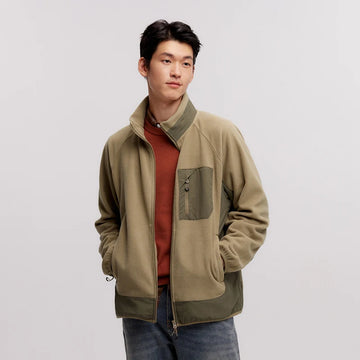Layering is a clothing method that helps navigate daily temperature changes, shifts between indoor and outdoor environments, and varying activity levels. Instead of replacing entire outfits, structured layering allows for gradual adjustments. Each added or removed piece changes the thermal and visual profile of the overall look.
Begin with a base layer. This can be a plain, fitted shirt or top that lies flat against the body. Long sleeves with straight hems and minimal surface variation make ideal starting points. This layer should remain consistent under jackets, sweaters, or overshirts without shifting or bunching.
The middle layer serves both visual and thermal purposes. Cardigans, button-down shirts worn open, or zip-up vests can all fill this role. Focus on garments with centered fastenings, unbroken front panels, and clear shoulder seams. These features allow the garment to sit cleanly when layered.
Outer layers such as trench coats or unlined jackets add another structural element. These should be long enough to overlap inner garments but light enough to carry without obstruction. Items with flat collars, symmetrical button placement, and no unnecessary external pockets help maintain alignment across layers.
Avoid using too many textures within one outfit. When combining layers, keep the surface appearance consistent. For example, a shirt under a fine-knit sweater works better than mixing open-weave fabrics with bulky weaves. Visual simplicity contributes to a more stable overall appearance.
Layered outfits should also account for accessories. Scarves with thin weaves and clear-edge finishing, beanies or caps with even stitching, and crossbody bags with straight straps provide both practical and aesthetic support to the layered structure. These accessories should not interrupt the flow of lines created by the layers.
When indoors or during warmer periods of the day, removing the outermost piece should not disrupt the visual balance of the remaining garments. That’s why choosing base and mid-layers that can stand alone is important. Each layer must contribute visually, even when others are removed.
Layering, when approached as a modular process, offers a methodical way to dress for changing conditions. By focusing on consistent shapes, structural repetition, and garment alignment, a layered outfit can adapt without losing cohesion or requiring complete changes.





